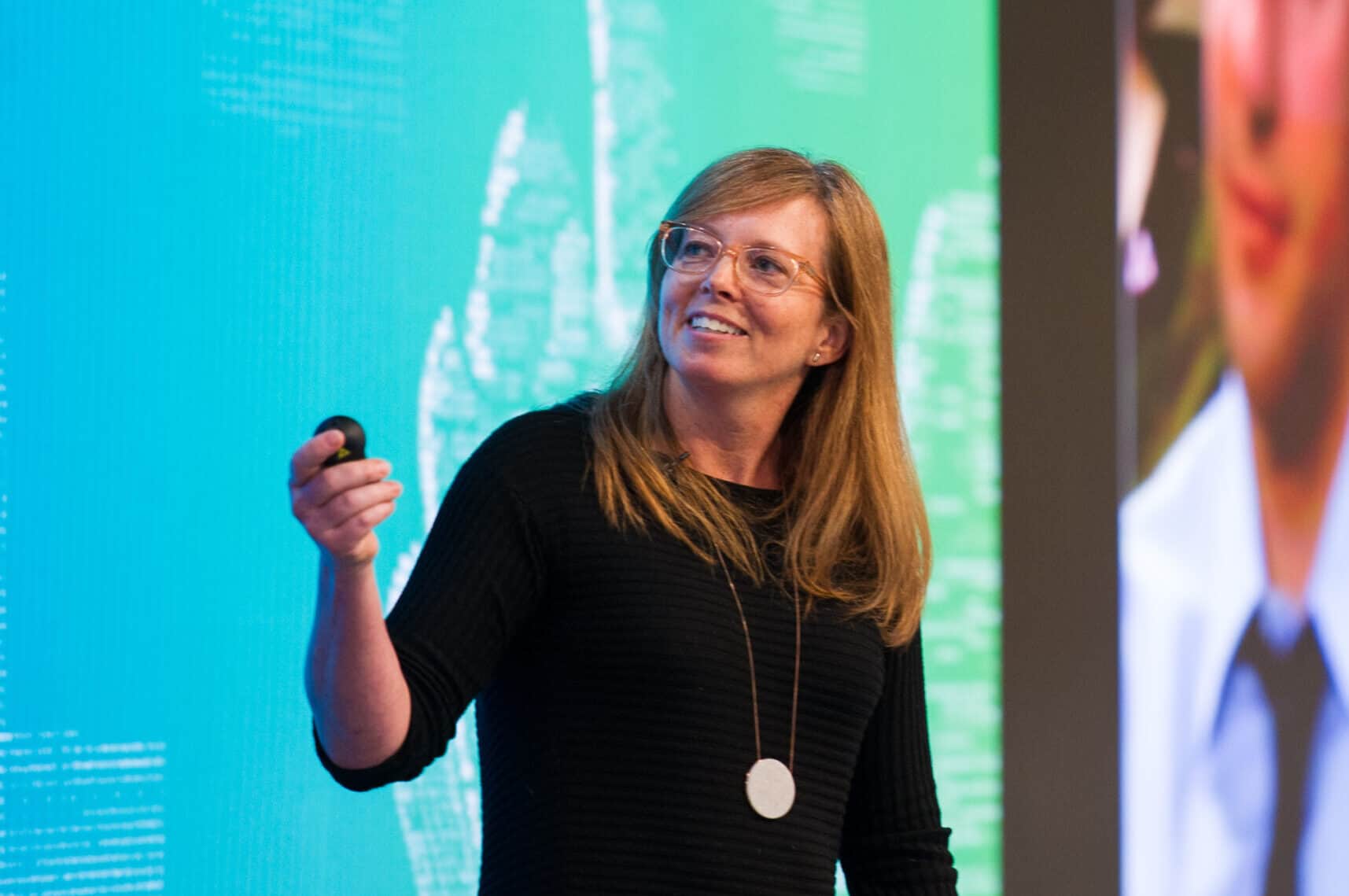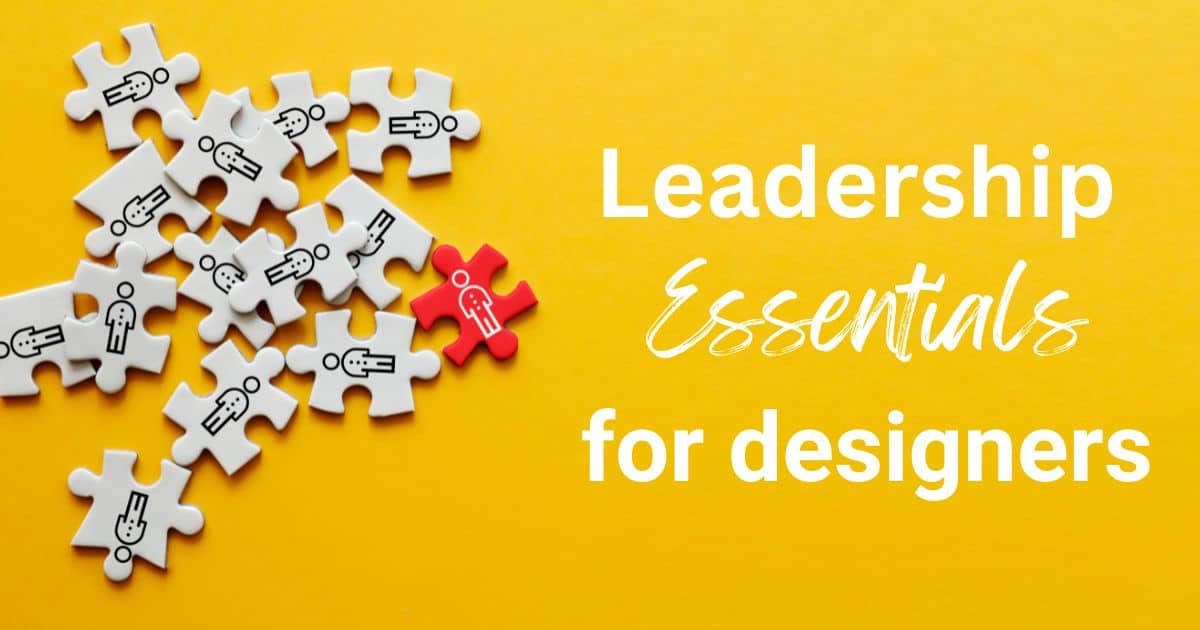Shannon McGarity has spent more than 20 years solving clients’ design challenges in roles ranging from head of product to UX director. Part of the team behind Pragmatic Design’s courses, Shannon serves as a lead instructor for the vertical. Read about her winding journey in design, her passion for empowering personal transformation and her excitement for the newly released courses at Pragmatic.
Tell us about your background in design.
I have been a designer of some sort for the past 20 years. I’ve had the benefit of working in a lot of different ecosystems and verticals.
I started doing illustration, visual design, then branding, and interaction design. That morphed into creative direction, then user experience design, and then service design. A long trail and history of moving through different design practices and disciplines but also doing that in a number of different environments, from health marketing to ISPs to entertainment organizations.
In the five years before I joined Pragmatic Institute, I was working as a design director at a company called Cooper, which eventually was acquired by the strategic design consulting firm Designit.
How did you extend from design consulting to facilitating and coaching?
We helped clients solve problems for their customers and we had an education group as well. At Cooper Professional Education, we took things we learned from our own practices and empowered others to use those mindsets and tools in their own practices.
There was a lot I loved about doing design work for clients, but one of the things that I found later in my career―which was amazing and a real game-changer―was that we ended up facilitating a lot of workshops for clients. In those workshops, you are exposing them to new tools, ideas, and ways of collaborating. You get to see growth happen in those moments, and it’s a little addictive.
The best gigs connect us to purpose. For me, that purpose is supporting others in achieving the impact they want to have in their careers and organizations.
Not only did I want more of those moments where people were expanding themselves, but I was, at the same time, making forays into teaching courses through Cooper. I got to see both of those worlds. I decided to lean into personal transformation and organizational transformation a little bit more—coming at it from empowering people.
What kinds of projects are you proudest of, as a designer or educator?
The best gigs connect us to purpose. For me, that purpose is supporting others in achieving the impact they want to have in their careers and organizations.
So when I hear a coachee has successfully stood up a new service design function at their organization, or a student has introduced new innovation capabilities that took root on their team? My heart triples in size.
Can you talk about the journey in launching Pragmatic’s Design Practice?
In the early days of the pandemic, after Cooper Professional Education (CPE) was shuttered, my design partner Jim Dibble, marketing manager Erin Thibeau, and I were welcomed to Pragmatic Institute. After 25 years of success developing a deep framework and trainings to empower product management and product marketing practitioners, Pragmatic had branched into data and had quickly adapted to the new remote reality.
By the summer of 2020, Pragmatic was ready to support new audiences in career growth. Design was a natural fit, and we were excited to help them care for this community that we knew and loved.
However, our first order of business was a course to support product managers in better leveraging design through collaboration. We immersed ourselves in conversations with the audience. Turns out, there can be friction between these two functions, but also complementary mindsets and rich opportunities for better outcomes. This work opened our eyes to further nuance around cross-functional collaboration. The course launched a year ago, and we’re proud to say it’s helping people do better work.
Finally, last summer, it was time to truly focus on our design friends! Sure, we’d come from an organization with a history of supporting designers. CPE had developed courses around design leadership, service design, UX, facilitation, research, and design thinking for over 13 years.
However, this vast and quickly-maturing community of practice might need new support. So, we kicked our biases to the curb and were afforded the opportunity to learn how designers would be best served right now.
Our team did the human-centered work you’d expect along the trajectory of the Double Diamond design model: qualitative and quantitative research, product strategy development and many rounds of prototyping and testing to make sure the larger offering—and those first two courses—hit the mark.
We’re not just swimming in a design practice space: it’s design in connection with and in relation to other functions. That’s magical.
Where did we land? The design practice is laser-focused on empowering design practitioners and teams to contribute more strategically in their organizations. Business Strategy & Design and Influence Through Storytelling are our two inaugural learning experiences. And there’s a lot of runway ahead.
What are you most excited about with Pragmatic Design?
By starting a design practice, Pragmatic has created a space—a community—for diverse perspectives and cross-functional collaboration in a way I don’t know that other learning-based organizations are doing.
Not only that, but we have data thrown into the mix as well. I love that we’re not just swimming in a design practice space: It’s design practice in connection with and in relation to other functions. That’s magical.
We’ve developed engaging, exploratory experiences built specifically upon design mindsets and tools. Our remote courses take advantage of Miro as a fully interactive platform where everyone contributes, the way they would in the classroom. Whether remote or in person, the facilitation is energetic, adaptive and fun.
Ok, now for a fun question: If you could have a private concert with any artist, who would it be?
Ah, this one’s easy! OK Go, by a landslide. I’ve been obsessed since the early aughts. They’ve developed an incredible brand and body of work over the years. OK Go became well known for their treadmill video, but they keep on devising these wickedly creative videos that have so much joy designed into them.
The band did this Ted Talk back in 2017 where they talked about creating the conditions to develop great ideas. Not only does it shoot down the myth that ideas are miraculously born whole from the heads of “creative people,” it shows off ideation as a rigorous process that de-risks design and encourages innovation at the beginning of a project by investing in creating space, stimuli and structure for lateral out-of-the-box thinking.
They embrace a principle that many successful designers are keyed into: the importance of generating quantity, not quality, in that early stage of product and service design. There’s so much here to dig into: how to facilitate this work, who to include, tools, how and when to evaluate ideas, etc. I just marvel how they approached this topic so creatively and concisely.
* * *
Learn more about Pragmatic Design here, and meet more of the design leaders and industry experts behind our design practice here.
Author
-

The Pragmatic Editorial Team comprises a diverse team of writers, researchers, and subject matter experts. We are trained to share Pragmatic Institute’s insights and useful information to guide product, data, and design professionals on their career development journeys. Pragmatic Institute is the global leader in Product, Data, and Design training and certification programs for working professionals. Since 1993, we’ve issued over 250,000 product management and product marketing certifications to professionals at companies around the globe. For questions or inquiries, please contact [email protected].
View all posts








